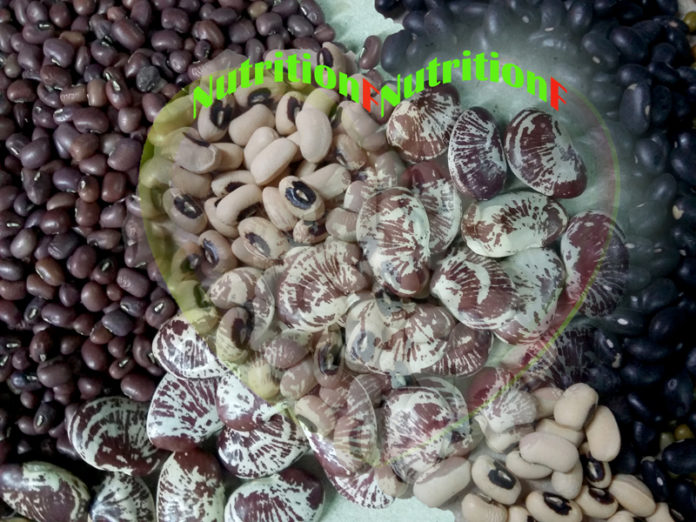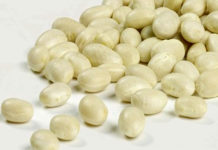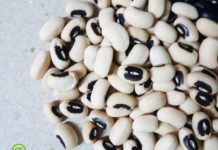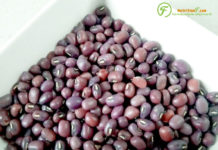In cooking today, beans are always one of the topics to be interested. Bean is a board name of pod-borne seeds from Fabaceae (or Legumenosae or simply Legume) family. The Fabaceae contains about 730 genera and 19.400 species. Among those, some species are important because they are foods to human and some to animal. The plant of Facabeae could be tree, shrub, herbaceous or vine. Its fruit is a pod-borne that could dehisce on two sides, with the seeds inside.
The Fabaceae seeds are starchy, and also contain a high amount of nutrient like vitamin, fiber, and protein which are very helpful to our health, especially fiber could help to lower cholesterol. These elements make beans to be popular in culinary. Beside many of fabaceae plants are the host for the bacteria in their root nodules, where they join to a nitrogen fixation process that convert nitrogen gas in the air to a usable form of nitrogen to the plant. This special process is helpful to the plant as well as could enrich the land, that the reason why fabaceae are usually planted between other plants.
Before discussing about the beans in food using, we know that through the history of culinary, legume appeared very early in Southeast Asia, the Americas and Europe and now is still widely grown and used throughout the world. It has been used in cooking early from the ancient time and it is till the powerful part in food using day by day in our life.
Related to fabaceae types or beans types, there are many species of fabaceae that used as food fresh or dry; we could consider some popular species such as Vicia, Phaseolus, Vigna, Cicer, Psophocarpus, Glycine, Arachis, Pisum, Cajanus, Mucuna, Lathyrus etc. However, it is difficult for us to know exactly them all base on the science name of the species like that. We may temporarily arrange them into two groups included bean and pea groups base on some typical their features with the popular name and then you may be easier to handle the type of them.
Pea species groups
For pea group, the main factors which effect to the arrangement of peas base on the small round shape, withstanding in the cold climate and green status even they are unripe or ripe. We have here some typical pea species such as Pisum, Cajanus and Lathyrus.
Bean species groups
For the bean group, the main factors influence the arrangement of beans such as the diversity of shapes, the changing of external colors when they are ripe and the living in hot and dry climate condition. So we temporarily arrange Vicia, Phaseolus, Vigna, Cicer, Psophocarpus, Glycine, Arachis, Macuna and Lentil in bean species groups. And now we mention of 2 species of bean group included Vicia and Phaseolus first.
-
Vicia
It is popular (also known as broad bean, fava bean) is native to Africa and Asia, and now is used in different areas. This species has wide pod, with green color when young and dark brown when ripe. The seed is round or kidney shaped and mostly oblate for the cultivated plant. This bean which contains high nutrition, especially protein could be used as vegetable when immature and dried when ripe. Some vacia species which are planted as forage to ruminant could be toxic to non-ruminant. However, the L-DOPA in the vicia is use in Parkinson and Hypertension treatment.
-
Phaseolus
Phaseolus species contains about 70 species which are all native to Americas. Some species of this genus are:
- Phaseolus acutifolus or Tepary bean: is an annual drought tolerant legume, the pod and seed could be or nearly any color. The seeds are in different sizes but mostly small and used as food.
- Phaseolus coccineus or Runner bean: is a perennial vine but usually treated as an annual. Its pod has knife-shaped, mostly green and is edible when immature. The seed could be use as fresh or dried.
- Phaseolus lunatus or Lima bean: this species name “Lima” is named after the “Lima, Peru” label when it was exported from the Spanish Viceroyalty of Peru to the Americas and Europe in 16th century. Most of cultivated Lima beans have long pod (up to 15 cm), with long flat and oval to kidney-shaped seed. The seed color is commonly white, but there are some other colors also known as black, red or orange. Lima bean contains high amount of fiber and fat-free which could help to lower cholesterol as well as regulate the blood sugar.
- Phaseolus vulgaris or Common bean: includes pinto bean, kidney bean, black bean, Appaloosa bean, green bean and many other species which are very popular around the world. Common bean genus mostly has long pod (8-20cm), with smooth, plump and kidney-shaped seed. The seed color could be green or mottled depend on the species.
- Phaseolus polyanthus
Two above bean species which are mentioned may be difficult to remember all surely under their science names. However it is easier to help you to see the point that it may be arranged in bean group or pea group if each species is attached with a typical bean name.
For species with typical name of beans or peas to read easily, you may go to different articles where NutritionF focuses on.
Related to the next parts of bean types please go to:
Type of beans – bean group (part 2): Vigna, Cicer and Psophocarpus species.
Type of beans – bean group (part 3): Glycine, Arachis, Macuna and Lentil species.
Type of beans (part 4): pea group









